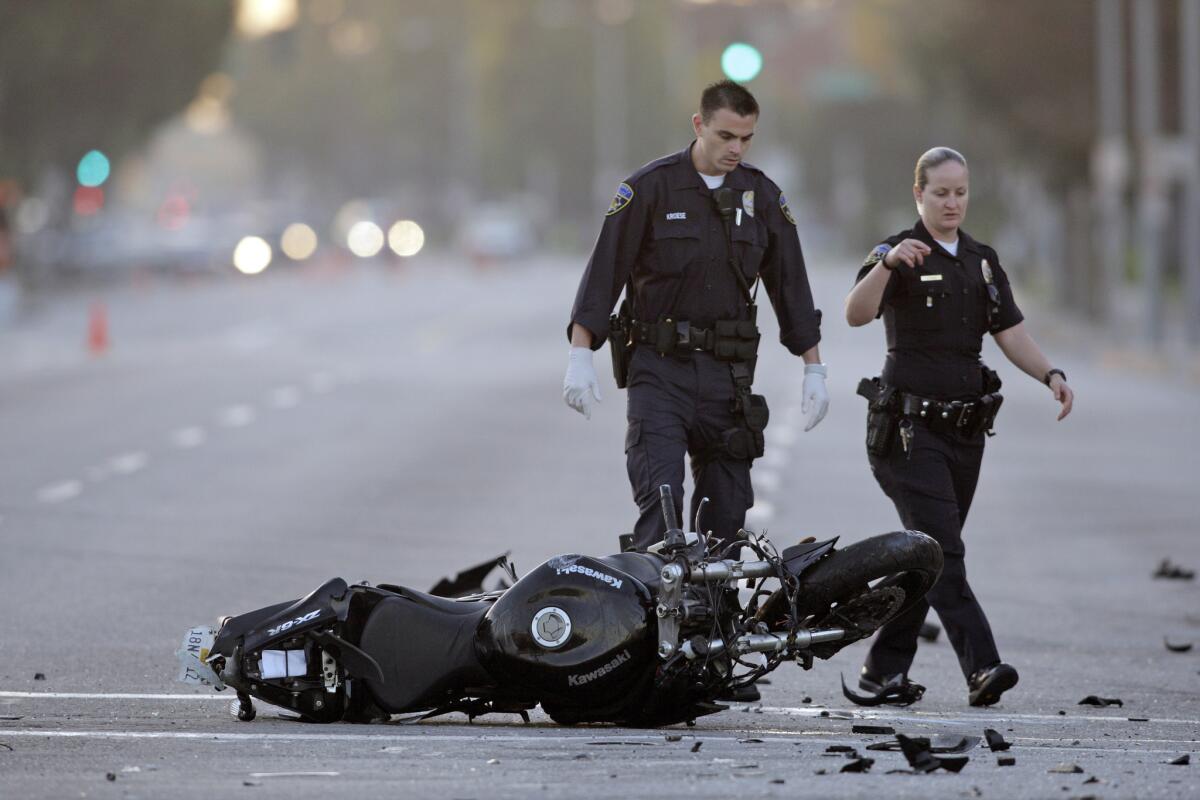Motorcycle fatalities drop 7% in U.S., 13% in California in 2013

Motorcycle fatalities in the U.S. in 2013 appear to have declined, according to a new report.
The Governors Highway Safety Assn. says 2013 fatalities are projected to have dropped 7% nationwide and 13% in California from 2012 levels.
That’s the good news. The bad news: Lower rates in many areas appear to be due not to better riding but worse riding conditions -- particularly a long cold winter that drove motorcycling miles down in many states, compared with a long dry winter in 2012 that drove rates up.
For the first nine months of 2013, there were 3,638 motorcyclist fatalities nationwide, compared with 4,046 for the same period in 2012, the GHSA study said.
For comparison, for the full year of 1997 there were 2,116 motorcyclist fatalities. In 2011 there were 4,612.
Dr. James Hedlund, a former National Highway Traffic Safety Administration official who authored the new study, says more universal helmet laws, reduced alcohol impairment, better motorcycle rider training and licensing, and more driver awareness of motorcycles could all help to cut motorcycle rider deaths.
In 2011, the most recent year numbers are available, 29% of motorcyclists killed on the road had a blood alcohol concentration above .08%, the legal limit for vehicle operation in California and many other states.
For the same period, 22% of riders involved in fatal crashes did not have valid motorcycle licenses. More than a third of riders in fatal crashes were speeding -- and half of those fatal accidents didn’t involve another vehicle.
Most tellingly, fatality rates were higher in states that do not have mandatory helmet laws. Currently, only 19 states require that helmets be worn by all riders and passengers. The remainder either require only that children wear helmets or have no requirements at all.
According to the NHTSA, “There were 10 times as many unhelmeted motorcyclist fatalities in states without universal helmet laws, compared to states with universal helmet laws, in 2012.”
“By far, helmets are the single most effective way to prevent serious injury and death in the event of a motorcycle crash,” said Kendell Poole, GHSA chairman.
According to Hedlund, who has studied before-and-after motorcycle fatality data in states that enact or repeal helmet laws, there was a mathematical correlation between helmet laws and rider deaths: “When helmet use goes down, rider fatalities go up,” he said.
Driver education would also help, Hedlund said. A high percentage of fatal motorcycle accidents occurred, he said, “when a car [driver], typically, doesn’t see the motorcyclist and turns left in front of the motorcycle.”
Having studied the numbers and issued a similar report every year since 2009, Hedlund, speaking from his office in upstate New York, did not sound optimistic about overall improvement in rider safety.
“I’d hate to think that the only thing you can do to prevent motorcycle deaths is have crummy weather,” he said. “But that’s what happened last year.”






